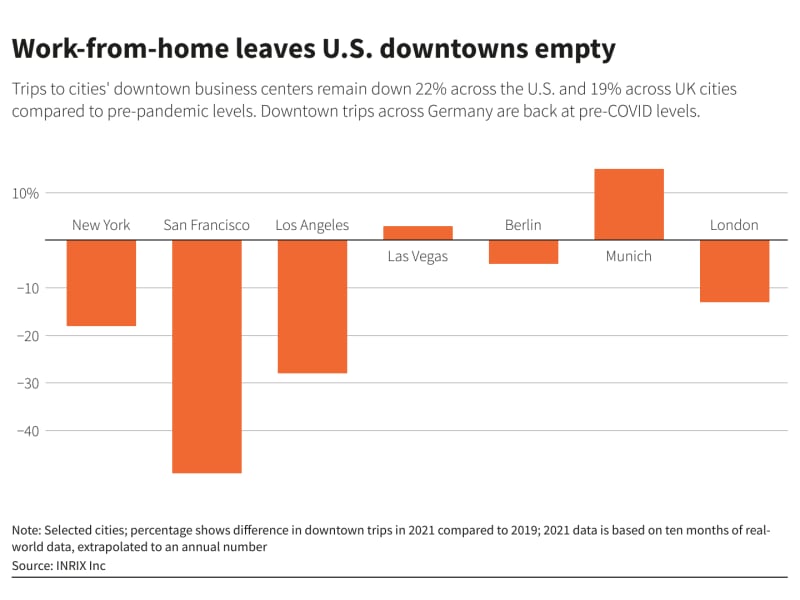Empty roads and cleaner air at the start of the pandemic have given way to a gradual return of traffic congestion in many global cities, but U.S. and UK downtown centers remain less busy as office workers continue to work from home, according to a study published on Tuesday.
Trips to U.S. downtown areas were 22% below pre-pandemic levels, and down as much as 49% in San Francisco, where many tech workers continue to work remotely, a 2021 traffic study of more than 1,000 cities by transportation analytics firm INRIX Inc showed.
Downtown trips in the UK remain 19% below pre-pandemic levels, but are back to pre-COVID strength in Germany, likely a result of fewer Germans working from home, said Bob Pishue, INRIX transportation analyst and author of the study.
“In the U.S., we don’t expect congestion to go back to the way it was before for a while, at least through 2022,” he said.
Traffic, an indicator closely tied to economic activity and recovery, overall has returned at uneven levels around the world, the study showed.
While the average London driver lost 148 hours in traffic this year — the most of any city dweller and roughly the same as pre-pandemic — the average U.S. city driver lost 36 hours in traffic, a nearly 43% decrease from pre-pandemic levels.
The stark differences are the result of governments’ varying approaches to pandemic restrictions, cities’ structures of downtown business centers, and workers’ ability to telecommute, Pishue said.
“There’s really not one answer for everything, it’s very complex,” said Pishue.
Vaccination rates also do not appear to influence traffic levels, with remote work being a larger driver, Pishue said. For example, in Washington D.C., normally one of the top congested U.S. cities, nearly 80% of residents are vaccinated, but hours lost to traffic remain down 65%.
Source: www.autoblog.com


